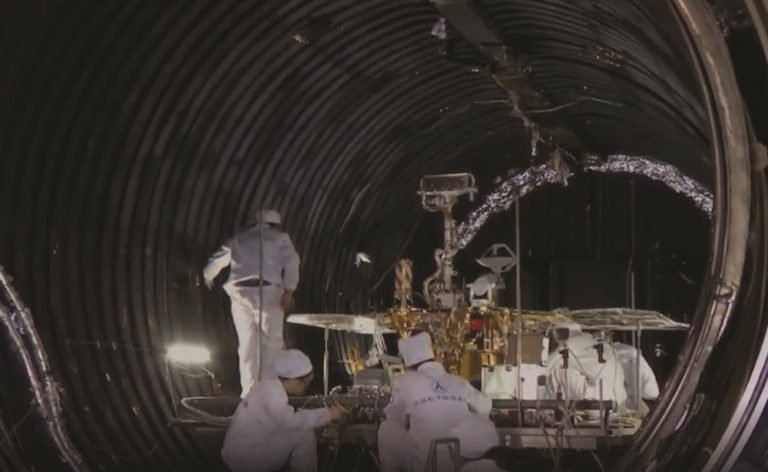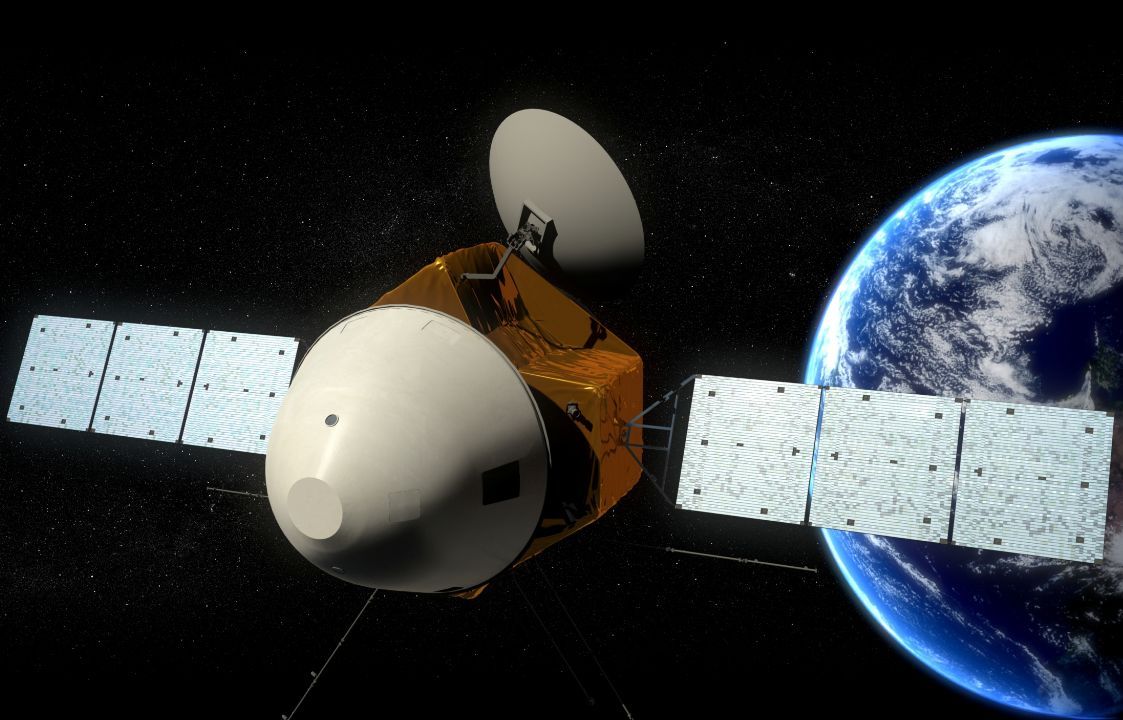It’s that season! With a previous United Arab Emirates launch to Mars and NASA’s upcoming Mars 2020 mission, China has decided to join the party! We have a unique window of opportunity where the orbits of Earth and Mars line up perfectly! Tianwen 1 consists of an orbiter, lander, and rover. China’s hoping this will be their first attempt to get to Mars and instead of just getting there, they hope to land too! It will also be the first non US-American or Soviet/Russian rover on the surface of Mars.
Lift Off (Time) (Window)
|
July 23, 2020 – 04:41:14 UTC |
|---|---|
Mission Name and what it is |
Tianwen 1, the first Chinese mission to land on Mars |
Launch Provider
|
China Aerospace Science and Technology Cooperation (CASC) |
Customer
|
China National Space Administration (CNSA) |
Rocket |
Long March 5 |
Launch Location |
LC-101, Wenchang Satellite Launch Center, China |
Payload mass |
4,920 kg (10,850 pounds) |
Where are the satellites going? |
Low Mars Orbit – 400 km (Initially going to heliocentric orbit) |
Will they be attempting to recover the first stage? |
No this is not a capability of the Long March 5 rocket |
Where will the first stage land? |
It will not land but instead crash into the South China Sea |
Will they be attempting to recover the fairings? |
No this is not a capability of the Long March 5 rocket |
Are these fairings new? |
Yes |
This will be the: |
|
Where to watch |
Watch with Tim! Everyday Astronaut Youtube |
What exactly is Tianwen 1?
For the first time ever, China is sending hardware to Mars, or to any other planet rather! The 2011 Yinghuo 1 Mars mission failed one of two burns to propel itself to Mars. Previously, China has only ever successfully sent hardware to the Moon. Tianwen 1 consists of an orbiter, a lander, and a rover which will serve different purposes.
After a 6 month journey to Mars, the orbiter will observe and study the surface for around 2-3 more months in a 400 km orbit before detaching from the lander and rover. The primary landing location for the lander and rover is in the Utopia Planitia. The lander-rover combo is enclosed in a capsule like structure to protect it from the heat and plasma created due to friction when entering Mars’ atmosphere. Once it reaches a safe altitude the capsule will deploy its one parachute in order to slow the rover down. Shortly after, the heat shield located on the bottom will jettison revealing the propulsive elements of the lander.
Finally, after reaching a safe altitude the lander will eject from the bottom of the back shell and ignite its single engine to softly touch down on the surface. At this point surface operations begin, which include the unfolding of the rovers camera arm as well as other various instruments and the dismounting of the rover from the lander.

What are the mission objectives?
Tianwen 1 includes 5 main objectives:
- Create a geological map of Mars,
- Investigate the different properties of the Mars soil with the potential of locating water-ice,
- Analyze the composition of the surface,
- Explore the atmosphere and climate near and at the surface and
- Gain an understanding of the gravitational and electromagnetic fields of the planet
These objectives overall are to help China gain a better understanding and increase their knowledge of the red planet.

What’s even on the orbiter and rover?
Each piece of hardware has a various suite of instruments to help achieve the mission objectives.
The Orbiter
Totaling six instruments, the orbiter will take measurements of the magnetic field with a magnetometer and take high resolution images (two meter wide pixel) of the surface. It will also use the Mars Ion and Neutral Particle Analyzer (MINPA) to investigate the various particle elements of Mars upper reaches.
The Rover
Also totally six instruments, the rover part of the mission has some unique qualities. One of the biggest talked about instruments is the Ground Penetrating Radar (GPR) which will be able to measure about 100 meters (330 feet) beneath the surface. GPR uses radar pulses in the microwave spectrum and detects the reflected signals from the subsurface.
In addition to the study of the magnetic field in orbit (400 km), the rover is also equipped with an instrument capable of measuring the magnetic field at the surface. As always, the rover will have multiple cameras for navigation (Navigation and Topography Camera) and for general images of the surface for further study. The rover has two wide angle cameras on its mast (the arm that appears to end in a head) and a few other communication antennas.
To get sufficient power, the rover will convert solar light into energy with enhanced solar panels. Mars is farther away from the Sun than the Earth, so the solar panels will have the ability to change their pitch to increase the amount of area receiving sunlight.

How does the Long March 5 work?
A current heavy-lift member of the Long March family, the Long March 5 rocket is a two-stage rocket which has two engines on each stage. The 1st stage has two YF-77 which run off of liquid hydrogen (LH2) and liquid oxygen (LOX). Following that, the second stage also uses LH2 and LOX for its YF-75D engines. There are also four strap on liquid propellant boosters which use Rocket Propellant 1 (RP1) and LOX. On the boosters, the inner engine has the ability to move where as the outer engine does not have the capability and is static.







Great article, appreciated!
Hey Pal
greetings 😀
Very nice
A good deep dive about this particular launch, Thanks
great china has put a rover on mars were is mr musk